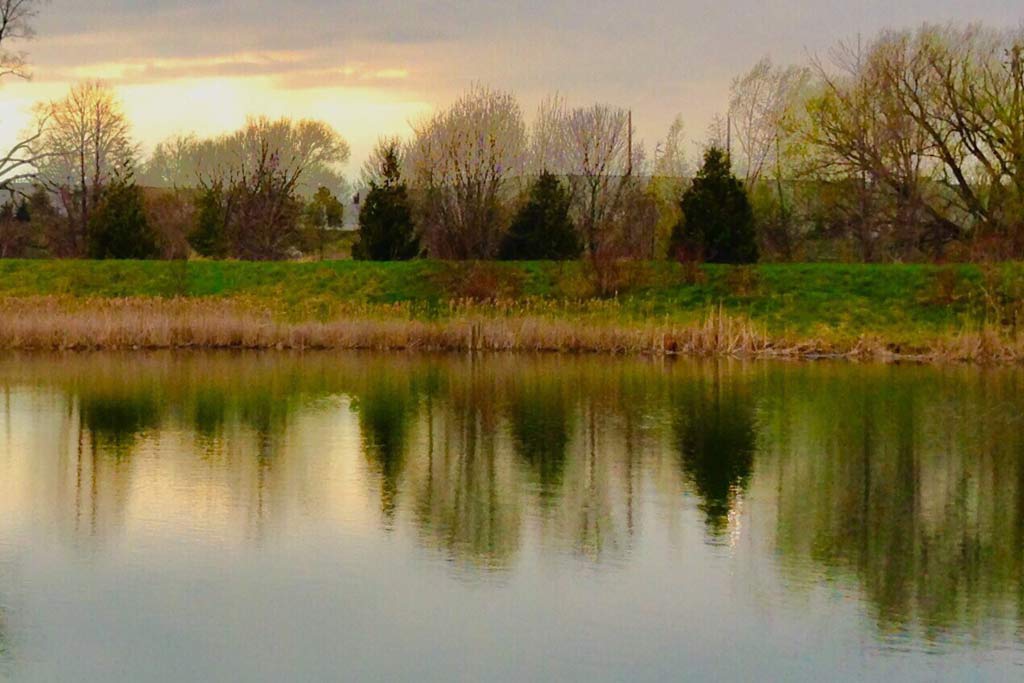Caring for our environment has been a topic since my days in grammar school…. over 50 years! I remember being so moved about the effects of ‘pollution’ that my third-grade science project was on pollution (earning me a 3rd place ribbon, beaten out by David Neilson who reconstructed a chicken skeleton from a recent meal, and Pam Maddock who showed how fish need clean water to survive).
By and large, the US EPA’s Clean Air Act and Clean Water Act, and laws governing hazardous waste of the 1970’s have dealt effectively with ‘pollution’. The next frontier (driven mostly by climate change) in protecting our world is in paying more attention to stormwater management, the use of ‘chemicals’, and protecting open space. Look on the homepage for nearly any village, and you’ll find references to how that municipality is working to be ‘green’. Designations like ‘Tree City USA’, hazardous household disposal programs, and installation like rain gardens all contribute to the desired result of a cleaner and healthier place to live. Thankfully, many candidates who run for office cite their commitment to a better environment as a top priority, and not surprisingly, more and more of those people are being elected to serve their communities.
Through the natural area restoration work we do for land conservancies, units of government, not-for-profit organizations, businesses, and private landowners, we get to see how some efforts to advance the pro-environmental movement that the citizenry wants and that leaders are responsible to deliver.
In many instances there clearly is progress! Gone are the days where lawn care companies use fertilizer containing unneeded phosphorus that do a nice job of turning lawns AND ponds green. Anyone wanting to rid their homes of unused prescription drugs or electronics would be living under a rock to not be able to find safe methods of disposal. Nearly any construction-related land disturbance is found to be encircled with silt fence, protecting local waterways from sediment and nutrients caused by erosion.
Unfortunately, not always do different sectors of the same government advance at the same pace. I’ll share three examples without naming names because this is not intended to be an indictment of any village policy or it’s representatives, but rather to call attention to the fact that just because there is a public program or declaration of an intention that aligns with the ‘green movement’, more work must be done to achieve the desired result.
EXAMPLE 1: The benefits of native plants are numerous: support of pollinators that are needed for humans to exist on this planet, root systems that sequester carbon in the ground as opposed to floating around in our atmosphere, the stabilization of soil to protect against erosion, etc. Many municipalities not only encourage its citizens to replace traditional turf with native plants, but they’ll often underwrite some of those costs. Many publicly acknowledge and award significant efforts for the use of native plants, and there are countless examples of native plants being maintained on public land.
However, many of these same cities and villages have outdated ordinances that prohibit ‘plant growth (aside from cultivated flowers) over 8” ….’, which is nearly every native plant in this region, with penalties of $25 to $750/day for the violation. It seems that while the leaders of this municipality advocate for a better environment through a multitude of other programs, the local ordinance regarding plant height needs to be updated.
EXAMPLE 2: ‘Stormwater management’ is a broad category that includes flooding, water quality, groundwater recharge, and erosion. Happily, there has been a significant realization by planners that keeping stormwater where it lands for as long as possible is the simplest way to achieve the reference goals of stormwater management. As a result, funding has increased for projects that replace stormwater sewers (that carry water quickly to receiving rivers and streams, overwhelming them and causing erosion and flooding downstream) with ditches vegetated with native plants (see Example 1 regarding native plants).
Bravo! Except that nobody told the village building department. There is a residential project where an impermeable tennis court (i.e. falling rainwater ran off into the surrounding area) was replaced with a pond that was able to hold and slowly release any excess water through a shallow ditch designed with native plants. While the design checked all the boxes in terms of the right thing to do for the environment, the local building code required that a concrete overflow connected to an underground pipe was required to handle any flow from the pond and route it to a nearby wetland. Not only did this add to the volume and velocity of the flow going to the wetland (erosion, flooding), it added to the cost of the project.
EXAMPLE 3: A village generally thought of as progressive in terms of embracing nature and advocating for continuation of its rural character contracts with a mosquito control company to drive up and down the local roads and spray insecticide. The irony is that this village is surrounded by and contains parts of five large forest preserves within the village limits. The perceived benefits of attempted mosquito control against the damage caused to the beehives kept by many residents is curious.
What can be done to accelerate alignment of the will of the people (all studies show that Americans want a healthier environment and are willing to pay for it) with either the rules on the books and/or those making decisions regarding policies and ordinances?
Excellent organizations like Openlands, Chicago Wilderness, The Morton Arboretum, The Conservation Foundation, and a multitude of Land Conservancies and Stormwater Commissions do a good job of educating the populous and advocating for pro-environmental policy. Voters, when given the right information, seem to support candidates with the right intentions. As we’re seeing, that is not enough.
Can organizations such as these develop and administer an orientation or training program for Village officials (elected, hired, or appointed) that would give them a good basic understanding of nature, policy, and governmental function resulting in being more effective at turning beliefs or ideas into results?
In the end, WE are the government. We as stakeholders in our villages, counties, states, and nationally have a say by who we vote for. We can also choose to support the organizations that are more influential and effective than we might be individually. Lastly, we are fortunate to be able to share what we think and how we feel, and with the power of technology and reach more people than ever. If you care about where you live, your health, and want to leave a better place for future generations, make your voice heard.
Hence the nexus of this blog. I hope to share other views that relate to the continued improvement of our environment, a career I’ve happily endeavored for my entire professional career.




